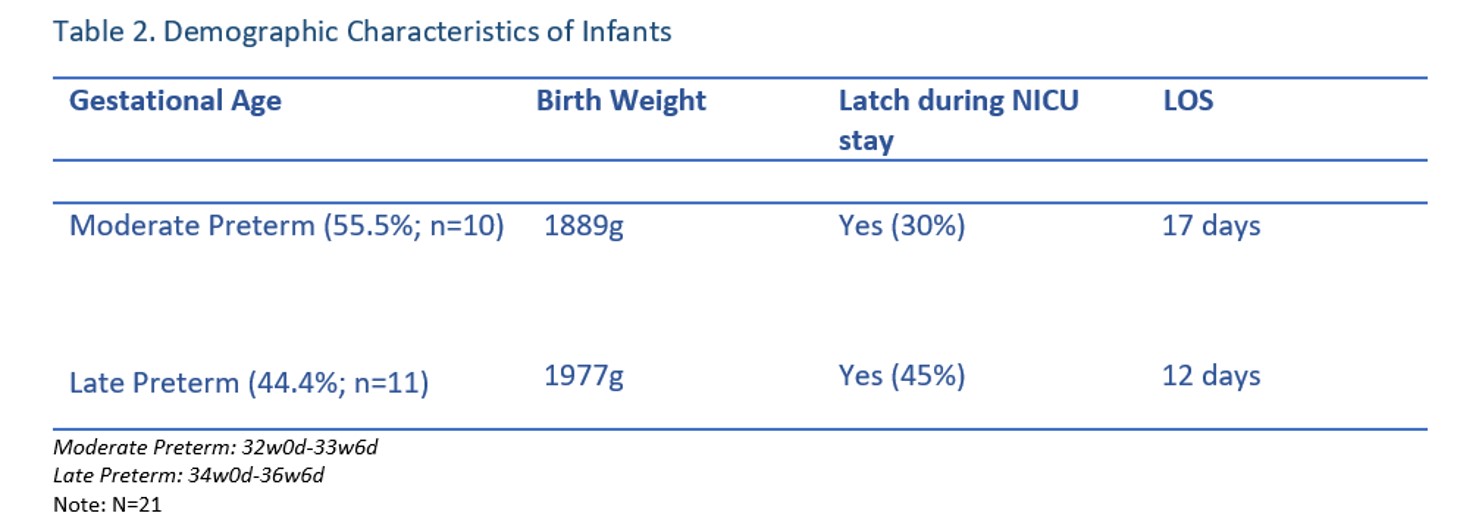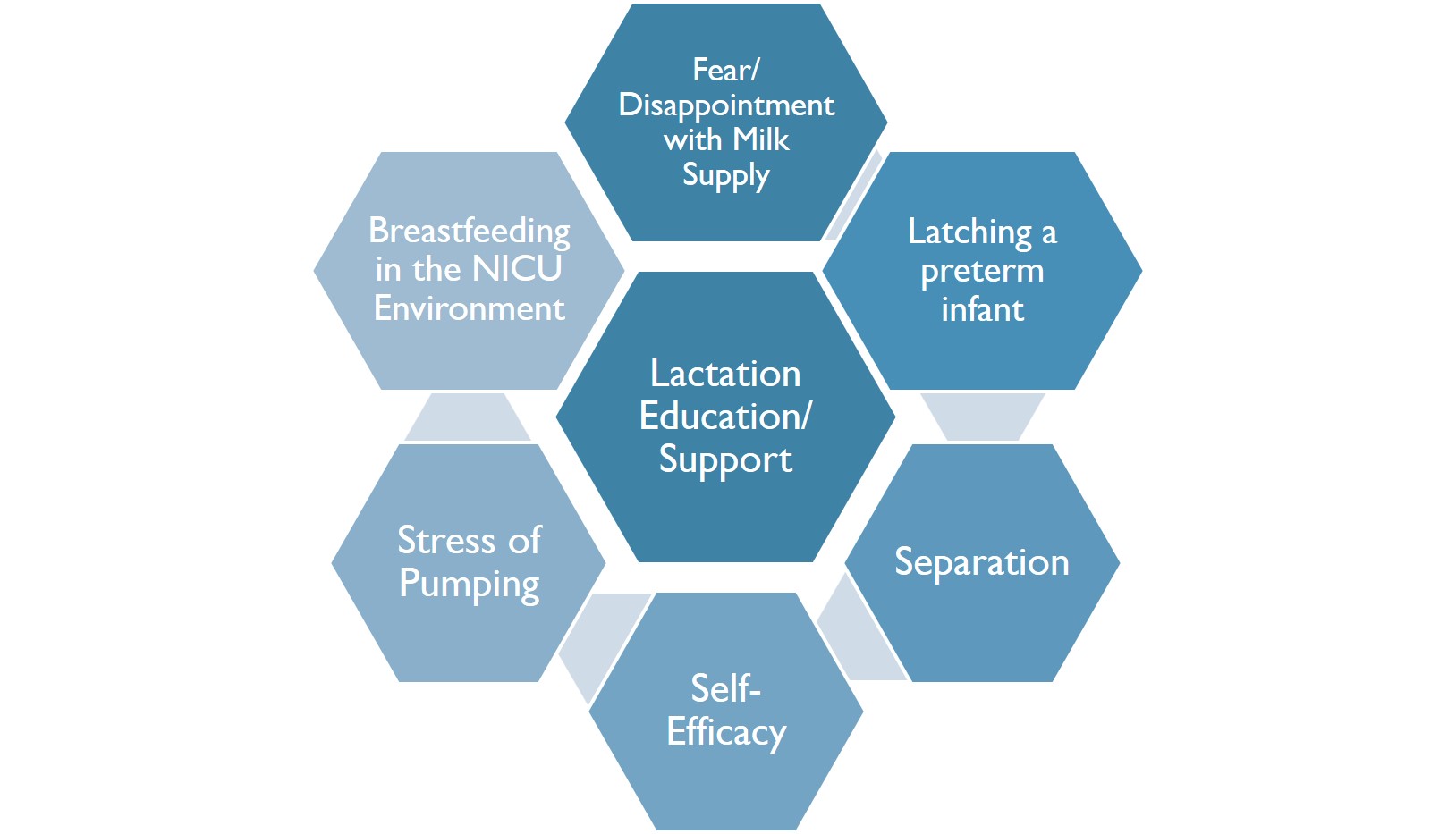Breastfeeding/Human Milk
Breastfeeding/Human Milk 4: Breastfeeding and Milk Provision
34 - Maternal Perceptions of the Lactation Experience with Moderately Preterm and Late Preterm Infants
Publication Number: 34.202
- AP
Amy Patel, MD
NewYork-Presbyterian Morgan Stanley Children's Hospital
Cliffside Park, New Jersey, United States
Presenting Author(s)
Background:
It remains unclear which maternal factors enable or hinder breastfeeding in the NICU setting and which factors impacting lactation success are modifiable.
Objective:
To characterize the lactation experience of mothers of moderately preterm and late preterm infants in a level 4 neonatal intensive care unit.
Design/Methods:
Interpretive, qualitative research methodology using Colaizzi’s phenomenological framework was applied to describe the milk expression experiences of 18 mothers of infants born between 32wk0d and 36wk6d. Mothers were asked to participate in a semi-structured interview which was audio recorded and transcribed using NVivo software. Maternal sociodemographic characteristics and variables related to pregnancy were also collected. Transcripts were analyzed using Colaizzi’s seven step method, through which seven core themes were identified, highlighting the mothers’ experiences.
Results:
Seven themes describing the lactation experiences of mothers of preterm infants emerged: a) Latching a Preterm Infant, b) Separation, c) Self Efficacy, d) Stress of Pumping, e) Breastfeeding in the NICU environment, f) Fear/Disappointment with Milk Supply, and g) Lactation Education/Support. 77.7% (14/18) were first time mothers, 38.8% (7/18) latched their baby successfully during the NICU stay, and 77.7% (14/18) delivered via Caesarean section. Despite 95% of mothers desiring to breastfeed, 63.6 % of late preterm infants received formula supplementation during the first week of life. 45% of late preterm infants latched successfully prior to discharge compared to only 30% of moderately preterm infants. At discharge, any human milk feeding was recorded in 95% (20/21) of infants, while any breastfeeding was recorded in 44.4% of mothers (8/18) and exclusive breastfeeding was recorded in 11.1% of mothers (2/18).
Conclusion(s):
A complex array of mental, physical, and structural factors influences a mother’s lactation success in the NICU. This study provides insight into the experience that mothers undergo when expressing milk and highlights the need for timely and ongoing lactation support and education in the unfamiliar and intimidating environment of the NICU. Moderately preterm and late preterm infants represent a particularly high-risk group that poses a specific set of clinical difficulties, but also stands to benefit greatly from maximal breastmilk exposure. Future QI interventions include earlier initiation and frequency of skin-skin care and latch practice, and targeted lactation education among mothers and nursing staff to increase the number of breastfeeding occurrences prior to NICU discharge.

.jpg)
